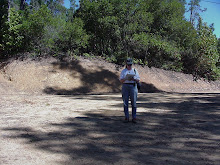And what shade did you say Father’s vestments were?
Today is Gaudete Sunday, the 3rd Sunday of Advent, a reminder of the joy and wonder upcoming, in the midst of Advent’s preparations. Purple (violet?) is the seasonal color, but today’s color is rose. Fr Paul tells us that the color comes from the combining the purple of Advent with the white of Christmas. He also pointed out that his vestments, which had come from St Michael, weren’t exactly the most wonderful shade of rose (they were pank, actually), but we got the drift...
And then, what appears on CeltList?
To: CeltList@yahoogroups.com
From: "Ted Hewitt"
Mailing-List: list CeltList@yahoogroups.com; contact CeltList-owner@yahoogroups.com
Delivered-To: mailing list CeltList@yahoogroups.com
List-Unsubscribe:
Date: Sun, 14 Dec 2003 20:48:14 -0000
Subject: [Celt] (+) Gaudete Sunday, Third Sunday of Advent
Reply-To: CeltList@yahoogroups.com
Gaudete Sunday, Third Sunday of Advent
Liturgical Color: Rose
Themes & Motives: rejoice, joy, preparation, coming, glory, splendor,
John the Baptist
Gaudete Sunday By Br. James Thompson, O.P.
http://www.newman-asu.org/lit_corner/lit_gaudetesunday.html
You have noticed the rose-colored candle in the Advent wreath, but do you know why one is rose while the others are purple? The color rose is only occasionally used liturgically, and it represents joy. Halfway through the otherwise muted season of Advent, we express the joyful aspect of anticipating the Lord’s coming. You can hear the theme of joy and rejoicing throughout the readings and prayers in the Mass.
The third Sunday in Advent was nicknamed “Gaudete Sunday” long ago. Gaudete means ‘rejoice!’ in Latin, and is the first word in the Latin Mass for that day. If you look up the “entrance antiphon” in a missalette, you will see that it starts out: “Rejoice in the Lord always!” In the Latin that would read Gaudete in Domino semper! Today we usually sing an opening hymn rather than recite or chant the entrance antiphon, but the theme of rejoicing is no less conspicuous now on Gaudete Sunday than in the past.
Is there a counterpart to Gaudete Sunday in Lent? Yes, there is. Halfway through Lent we celebrate what is traditionally called “Laetare Sunday.” As in Advent, we take a mid-term break from the somberness of the season for joyous anticipation. Laetare Sunday also takes its name from the entrance antiphon of the day, whose first word is a Latin synonym also meaning “rejoice” or “be joyful.” This is the other time you may see liturgical use of the color rose.
-------------------------------------
Gaudete Sunday (full article available at):
http://www.newadvent.org/cathen/06394b.htm
The third Sunday of Advent, so called from the first word of the Introit at Mass (Gaudete, i.e., Rejoice). The season of Advent originated as a fast of forty days in preparation for Christmas, commencing on the day after the feast of St. Martin (12 November), whence it was often called “St. Martin’s Lent” -- a name by which it was known as early as the fifth century.
The introduction of the Advent fast cannot be placed much earlier, because there is no evidence of Christmas being kept on 25 December before the end of the fourth century (Duchesne, “Origines du culte chrétien”, Paris, 1889), and the preparation for the feast could not have been of earlier date than the feast itself. In the ninth century, the duration of Advent was reduced to four weeks, the first allusion to the shortened season being in a letter of St. Nicholas I (858-867) to the Bulgarians, and by the twelfth century the fast had been replaced by simple abstinence. St. Gregory the Great was the first to draw up an Office for the Advent season, and the Gregorian Sacramentary is the earliest to provide Masses for the Sundays of Advent. In both Office and Mass provision is made for five Sundays, but by the tenth century four was the usual number, though some churches of France observed five as late as the thirteenth century.
“When you perceive that God is chastening you, fly not to His enemies… but to His friends, the martyrs, the saints, and those who were pleasing to Him, and who have great power in God.” John Chrysostom: Orations 396 AD
To unsubscribe from this group, send an email to: Medieval_Saints-unsubscribe@yahoogroups.com
[Conversely, to subscribe, send an e-mail to: Medieval_Saints-subscribe@yahoogroups.com]
14 December 2003
Gaudete Sunday
Subscribe to:
Post Comments (Atom)


No comments:
Post a Comment